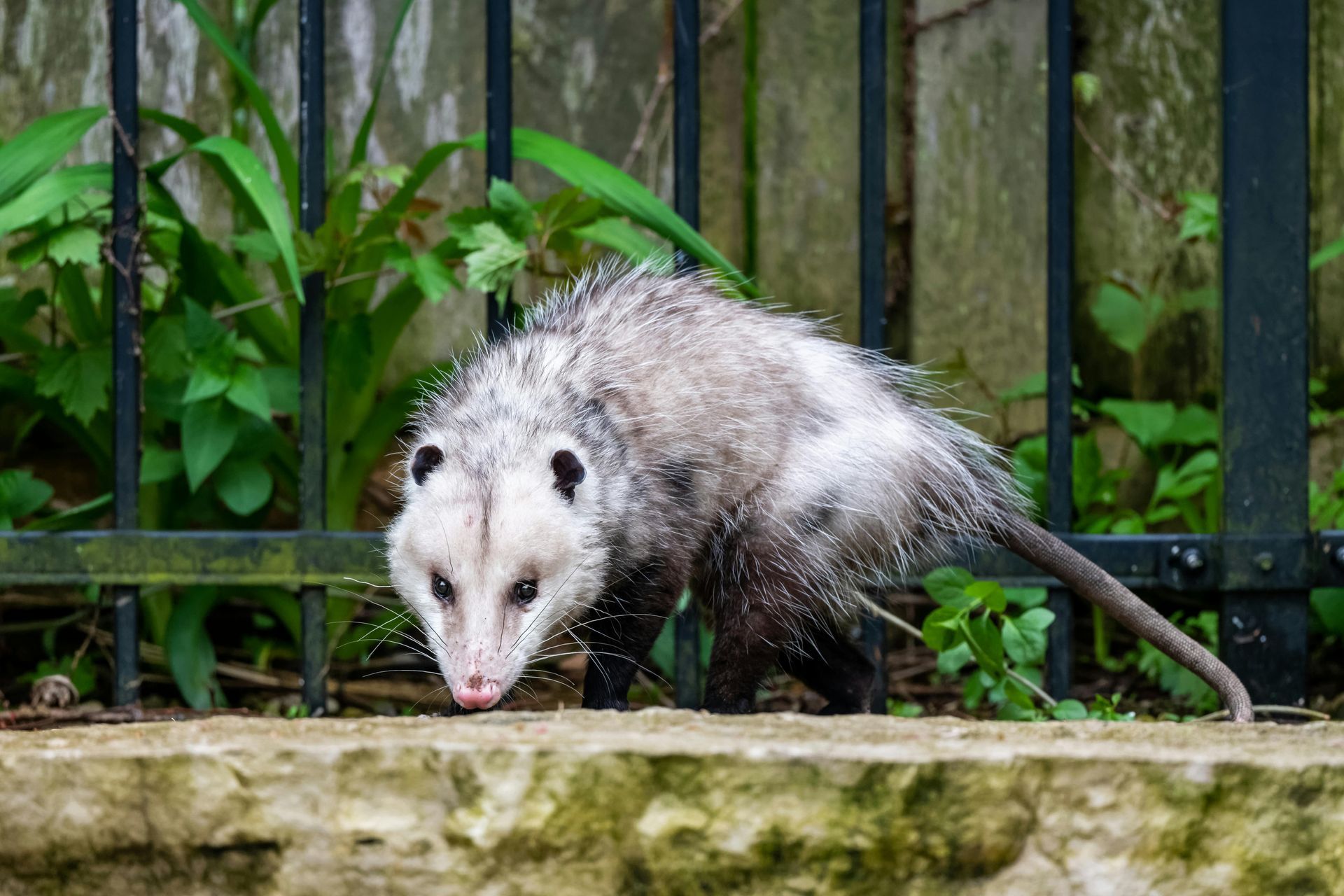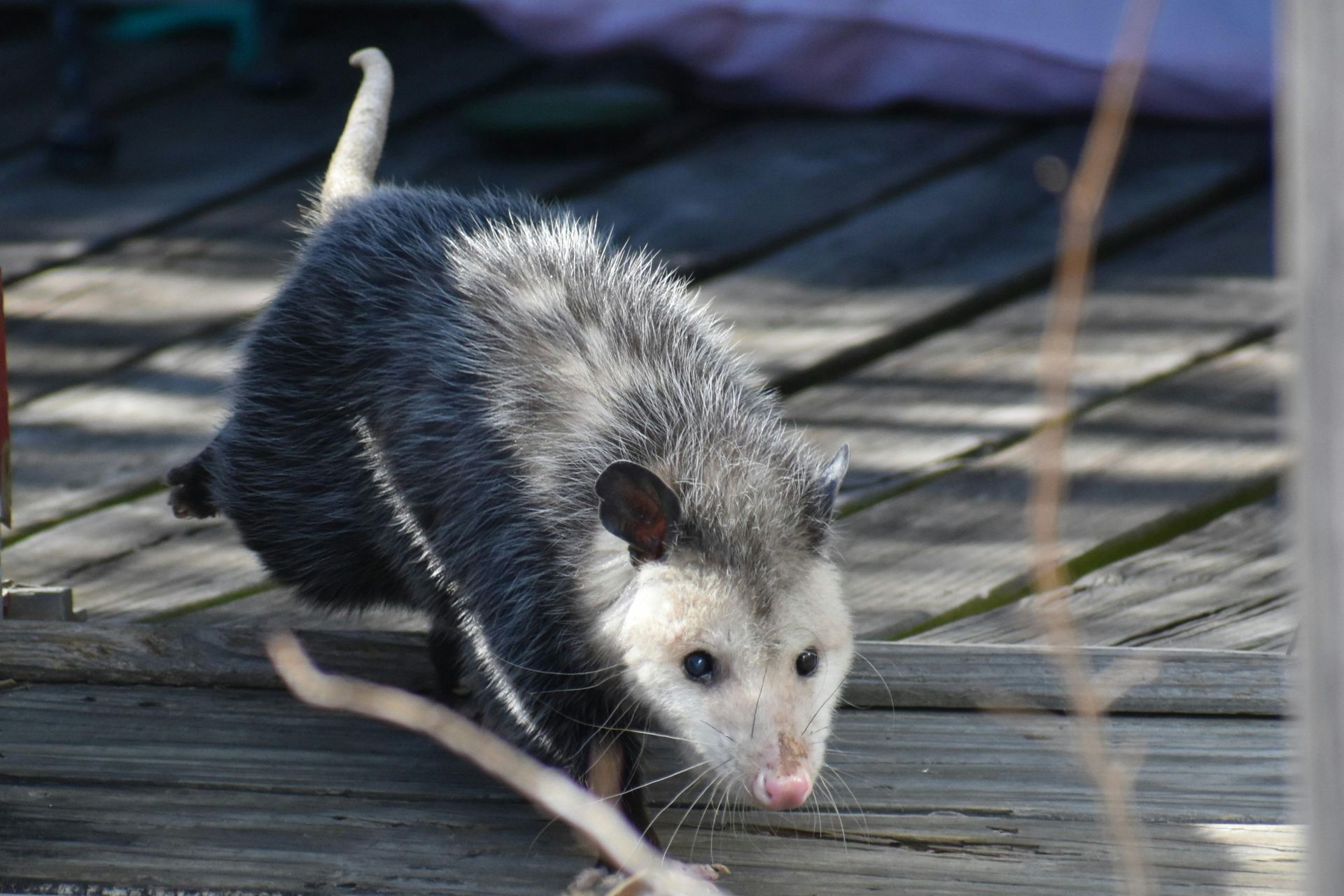Opossums are North America’s only marsupials, known for their prehensile tails, nocturnal habits, and unique defense mechanism of “playing dead.” Found throughout the United States, they thrive in diverse environments, including forests, wetlands, and urban areas. Opossums play an important role in ecosystems by controlling insect and rodent populations and scavenging carrion.
Opossums are medium-sized mammals, measuring about 21-36 inches in length (including their tails) and weighing 4-15 pounds. Their coarse fur is usually grayish-white, and their faces are marked by long, pointed snouts and black eyes. They are opportunistic omnivores, feeding on fruits, insects, small mammals, eggs, and human food scraps.
As marsupials, female opossums carry their young in a pouch for about two months after birth. Once the young leave the pouch, they ride on their mother’s back for several weeks. Opossums are solitary and nomadic, frequently moving to new shelters such as tree hollows, abandoned burrows, or human structures.
Natural predators include foxes, coyotes, owls, and domestic dogs, but human-related threats such as vehicle collisions and poisoning pose the greatest risks. Despite these challenges, opossums are highly adaptable and have successfully expanded their range.

For your safety and the well-being of wildlife, please observe animals from a distance and avoid touching or disturbing them. If you encounter an animal that appears injured or in distress, contact a licensed wildlife rescue organization for guidance before intervening.
Found An Animal? Not sure how to help a wild animal in need? Learn when to step in, who to call, and how to help safely.
Did You Know?
- Opossums are immune to venom from rattlesnakes and other venomous snakes.
- They have a remarkable resistance to rabies compared to other mammals.
- Their tails are prehensile and help them climb and balance, although despite the common belief, they are not able to hang from them.
- When threatened, opossums may “play dead” for several minutes to an hour, emitting a foul odor to deter predators.
- Opossums have 50 teeth—the most of any North American mammal.
- Their low body temperature makes it difficult for many viruses, including rabies, to survive.
- Opossums are excellent swimmers and can cross streams and rivers with ease.
- They have a keen sense of smell and use it to locate food, especially at night.
- Opossums are the only native marsupial in North America.
- Often referred to as ‘the living fossil’, opossums have been residing on Earth since the dinosaur age. They have been known to inhabit the Earth for 70-80 million years, making them one of the world’s oldest surviving mammals.
- A mother opossum can care for up to 13 babies at a time!
- A mother opossum will often carry all her juvenile babies on her back, and won’t notice if one falls off! If you find a young opossum all alone in your yard a good rule of thumb is that if it is as long as a dollar bill (not including its tail) it can be left alone. Always call your local rehab if you have questions or concerns!
Problems Faced In The Wild
- Vehicle Collisions: Opossums are frequently struck by cars while foraging at night.
- Predation: Domestic dogs and larger wild predators often target opossums.
- Poisoning: Rodenticides and pesticides can harm opossums directly or indirectly.
- Habitat Loss: Urban development reduces natural shelter and foraging opportunities.
- Human-Wildlife Conflict: Opossums are sometimes seen as pests and removed from residential areas.
- Climate Change: Altered weather patterns may affect food availability and shelter.
Tips For Cohabitation
- Secure Trash Bins: Use wildlife-proof containers to prevent opossums from scavenging.
- Avoid Using Poisons: Choose humane pest control methods to protect opossums and other wildlife.
- Provide Natural Shelter: Allow brush piles or leave tree hollows for opossums to use as shelter.
- Keep Pets Indoors at Night: Reduce interactions between domestic animals and opossums.
- Seal Entry Points: Prevent opossums from nesting in attics or crawl spaces by sealing access points.
- Educate the Community: Share the ecological benefits of opossums in controlling pests and cleaning up carrion.



